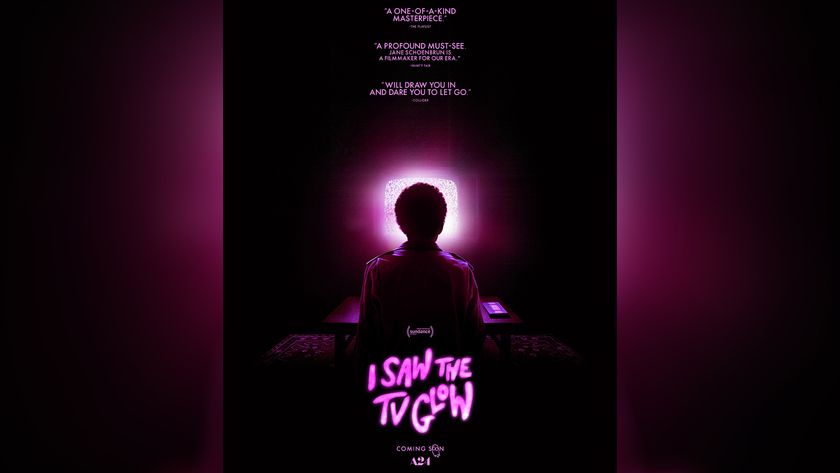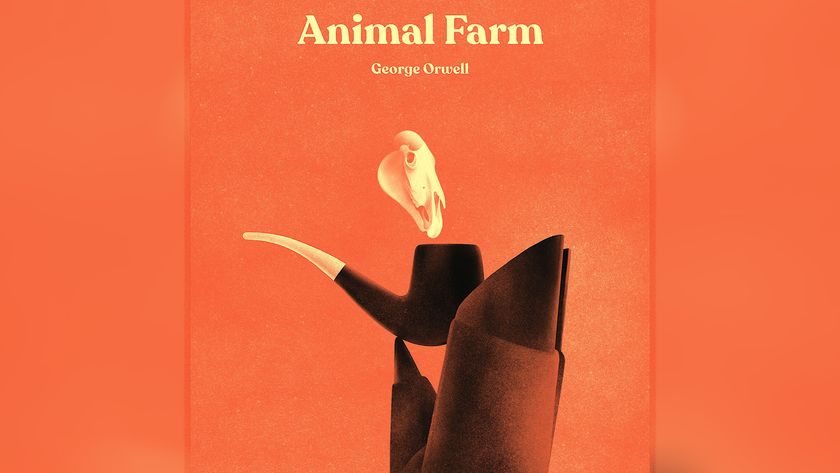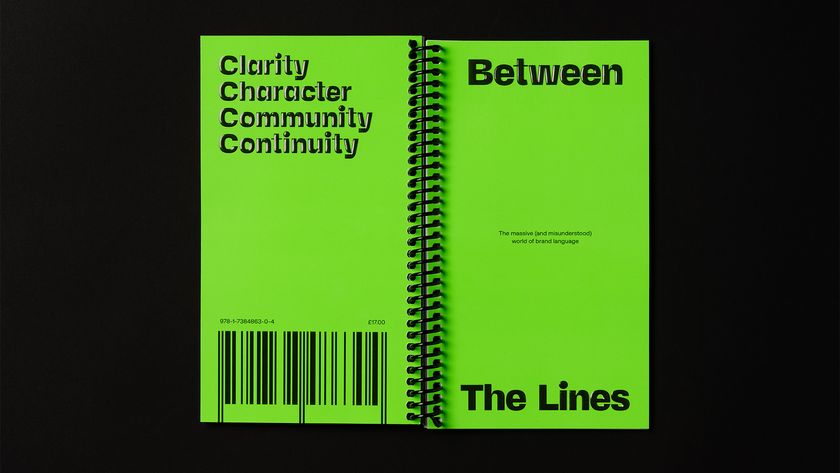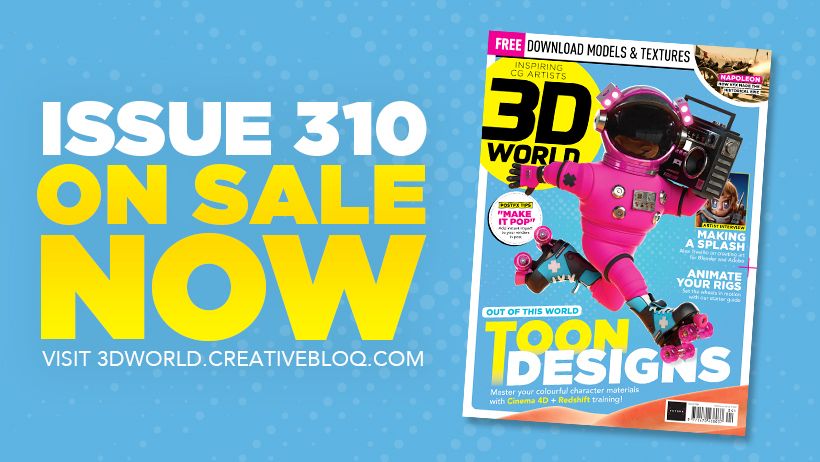Stefan Sagmeister on humility, happiness and handmade
In an exclusive video filmed at Design Indaba, the ever-charismatic designer muses on what keeps him engaged, inspired and motivated.
Stefan Sagmeister is a man who needs no introduction, so we won't give him one. We caught up with the Austrian-born, New York-based design legend with a film crew on the lawn outside his hotel in Cape Town, South Africa after he'd closed the final day at the inspirational Design Indaba conference…
You said in your talk, "Humility: I don't give a shit about it. I'm not a humble person." Is humility important for 'rockstar' designers like yourself?
My feeling is that ultimately it's important to be truthful, so if I'm not humble, the awful way to be is falsely humble. I once heard at one conference two different speakers use the phrase "a field I've been accused of inventing". So when I see people like [fellow Indaba speaker] Thomas Heatherwick, who do really fantastic work but are believably humble, it's a wonderful thing to see. But it has to be authentic: I'd take truthful boastfulness over fake humility any day.
To what extent is there mutual respect at the top of the game – is there ever a risk of an iconic designer's reputation overshadowing their current work?
In New York, the entire design scene seems to be one of helpfulness and support. That tone was not set by my generation, but by the two generations before us. Milton Glaser and Paula Scher both called my studio when we opened up and said, 'We love your work, we'd love to come and meet you.' I think everybody in our generation found that to be so pleasant, and hopefully we try to continue that.
Sometimes when I go to Europe, it can be very different. If I ask one known designer, 'How is that guy doing?' – you know, another known designer – I might get a slightly backstabbing answer like: 'Oh, he hasn't done anything in years.'
You poke fun at yourself during your Happiness talk: "Stefan always shows the same old stuff. Seen it all before on TED.com". Would you call that humility?
It's probably less humility and more truthfulness, because I have had that reaction here and there. I think it has something to do with my inability to do a new talk each time. My talks, by and large, change slowly and I wouldn't have the wherewithal to do a new talk – part of it is time, and it also would be impossible to put new projects in every single time because we don't work that fast.
What fascinates you about happiness as a topic?
Roughly 10 years ago I asked myself, 'Why am I doing all this stuff? Why am I designing?' Following it to the end point, it was to increase wellbeing – for both myself and the audience. To create something that could be even the tiniest little bit delightful.
From that little kernel, I thought it might be helpful to bring the two together in a talk under the title Design and Happiness. It always had fantastic feedback, much more than a regular portfolio talk.
Get the Creative Bloq Newsletter
Daily design news, reviews, how-tos and more, as picked by the editors.
Do you produce your best work when you're happy?
Yes, I definitely produce better work when I'm in good shape. I have more energy, I also feel that I'm much more useful to other people. I feel that this whole idea of the 'suffering artist' only doing good work when there is catastrophe in their life is a romantic one, and has not much to do with reality. I very much hope that the fact that we like what we're doing, and there's joy in the studio, is reflected in the work.
How do you combat stress and keep that vibe going?
Before I go to bed at night, I often picture myself in some sort of truck going through an incredibly cold landscape like Antarctica or Siberia. I redesign that truck in my mind: it's cosy and warm in there, and I have all sorts of supplies, but it's freezing outside. While I'm thinking about that truck, I always manage to sleep quite comfortably and calmly.
In your 'making of' videos, you and Jessica [Walsh] are both clearly enjoying the process. Does working with handmade techniques make a difference?
Underlying everything we do is that we want to talk to humans, while being human. Everybody hates talking to a machine when they call a company; they want to find their way to an actual human. I'm absolutely not anti-digital, and our work wouldn't be possible without it being touched by a digital process at some stage. But that still allows for the fact that it's clear it was created by people with love and affection behind it. Hopefully.
Case study 01: Adobe Logo Challenge
Sagmeister chatted to us about how his serendipitous partnership with Jessica Walsh came about, and how their complementary approaches benefit the studio. "We have a similar interest in whether it's possible to touch someone's heart with design," he muses. "Considering Jessica is a woman and much, much younger than myself, the manifestation of that interest looks quite different, of course."
With a faux-cheesy gameshow feel, Sagmeister & Walsh's recent Adobe Challenge project shows off their shared sense of fun and mischief. The project sees the duo go head-to-head to recreate the Adobe logo with a variety of increasingly bizarre materials, and be judged by a panel of fellow creatives.
Case study 02: Aïzone SS14 campaign
S&W's ongoing work for Beirut-based department store Aïzone has made use of a dizzying variety of handmade techniques and materials, including body paint, balloons and pigment powder. The SS 14 campaign keeps that vibe alive with bubbles, bubblegum and paper cut with a katana sword.
"The materials that I like best are probably the ones I haven't touched before. It's always interesting to learn a new process," Sagmeister reflects. "I was born close to the German border, so I like to plan – from my DNA, I'd actually like to repeat myself. That's incredibly boring and I have to find a way out, but if I go too far away from what I know, it becomes anxiety-ridden. I'm most comfortable when I know half of what I'm about to do, and not the other half."
This article originally appeared in Computer Arts issue 226.

Thank you for reading 5 articles this month* Join now for unlimited access
Enjoy your first month for just £1 / $1 / €1
*Read 5 free articles per month without a subscription

Join now for unlimited access
Try first month for just £1 / $1 / €1
The Creative Bloq team is made up of a group of design fans, and has changed and evolved since Creative Bloq began back in 2012. The current website team consists of eight full-time members of staff: Editor Georgia Coggan, Deputy Editor Rosie Hilder, Ecommerce Editor Beren Neale, Senior News Editor Daniel Piper, Editor, Digital Art and 3D Ian Dean, Tech Reviews Editor Erlingur Einarsson and Ecommerce Writer Beth Nicholls and Staff Writer Natalie Fear, as well as a roster of freelancers from around the world. The 3D World and ImagineFX magazine teams also pitch in, ensuring that content from 3D World and ImagineFX is represented on Creative Bloq.












